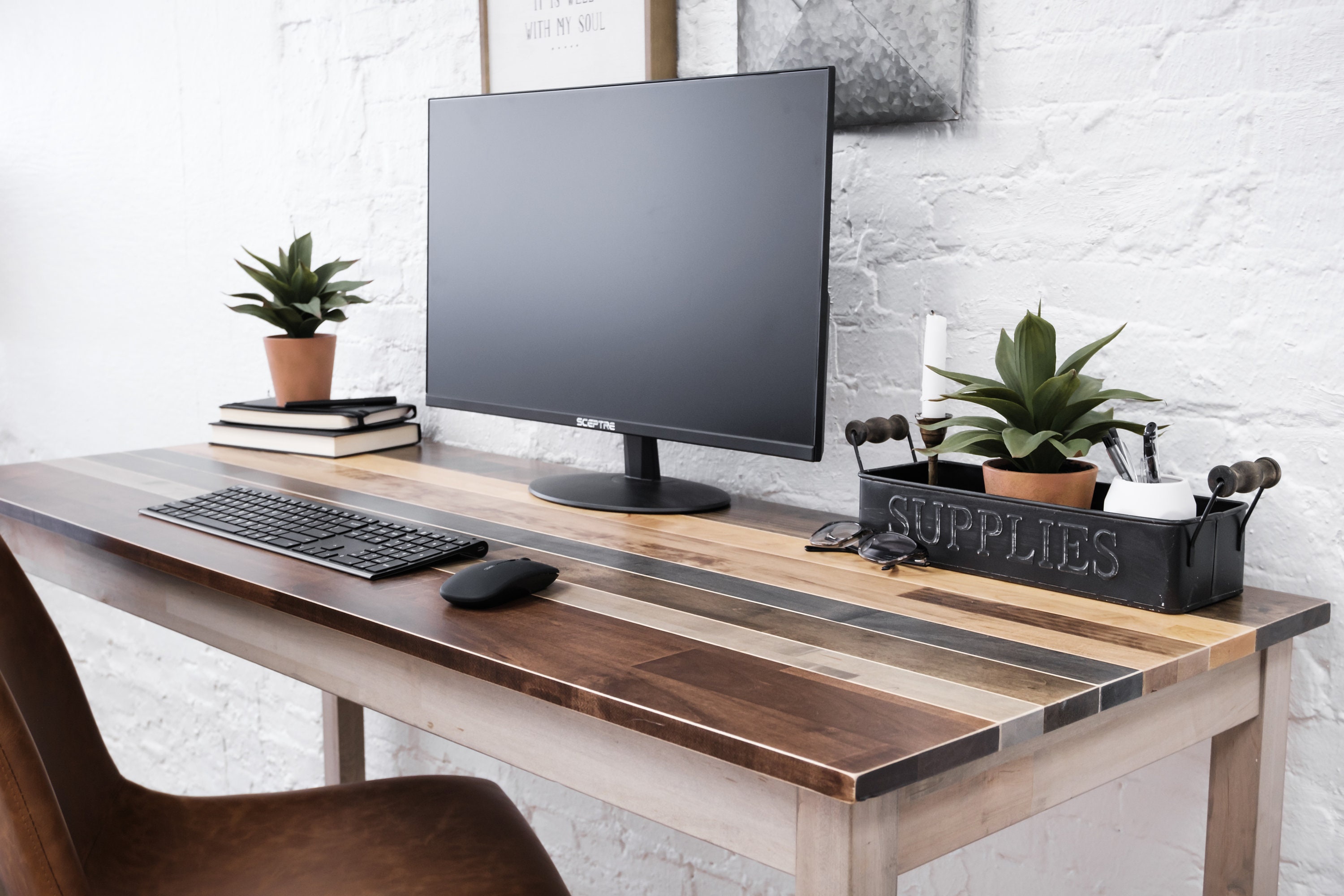
The allure of mid-century modern design lies in its timeless elegance and functional simplicity. A mid-century modern wooden desk, with its clean lines, organic forms, and emphasis on natural materials, can become a centerpiece in any home office, study, or creative space. This guide will delve into the process of crafting such a desk, from initial design to final finishing, empowering you to create a piece that reflects your individual style and functional needs.
1. Design and Planning:
Inspiration and Research: Begin by exploring the world of mid-century modern furniture design. Study iconic pieces by renowned designers like Eames, Saarinen, and Noguchi. Examine their use of wood, material choices, and signature design elements, such as tapered legs, cantilevered shelves, and geometric shapes.
Defining Functionality and Style: Consider the specific functions you intend for your desk. Will it be used for writing, drawing, computer work, or a combination of these? Determine the necessary size and layout, including drawer space, shelves, and workspace.
Sketching and Material Selection: Sketch different design concepts, playing with proportions, shapes, and material combinations. Choose wood species based on their aesthetic appeal, durability, and availability. Popular mid-century modern choices include walnut, teak, and cherry.
Creating a Detailed Plan: Once you have a clear design in mind, create a detailed plan with precise measurements, material lists, and step-by-step instructions. This will serve as your blueprint throughout the construction process.
2. Cutting and Assembling the Desk Frame:
Preparing the Wood: Purchase high-quality wood planks in the desired dimensions. Ensure the wood is properly dried and planed for smooth surfaces.
Cutting the Pieces: Use a table saw or circular saw to cut the planks to the precise lengths and angles specified in your plan. Pay close attention to accuracy, as any discrepancies will affect the final structure.
Joints and Fasteners: Consider using traditional joinery techniques like mortise and tenon, dovetails, or pocket holes for strong, durable joints. For a more modern aesthetic, utilize metal brackets, L-brackets, or concealed fasteners.
Constructing the Frame: Begin assembling the frame, starting with the top, sides, and legs. Use wood glue and clamps to secure the joints. Ensure the frame is square and level throughout the assembly process.
3. Adding Features and Finishing Touches:
Drawer Construction: If your design includes drawers, create the drawer boxes using the same precision and techniques as the frame. Install drawer slides for smooth operation.
Shelving and Storage: Construct any shelves or other storage elements according to your plan, paying attention to weight distribution and stability.
Finishing Touches: Incorporate any desired decorative elements, such as metal accents, fabric inserts, or unique hardware.
4. Sanding and Finishing:
Sanding: Sand the entire desk, starting with coarse grit sandpaper and gradually moving to finer grades. Smooth out all rough edges and imperfections. Pay special attention to achieving a consistent finish, particularly in the areas where different pieces join.
Finishing: Select a finish that complements the wood species and desired aesthetic. Options include oil-based finishes, water-based polyurethanes, or waxes. Apply multiple coats according to the manufacturer's instructions, allowing sufficient drying time between coats.
5. Final Assembly and Installation:
Final Assembly: Once the finish has cured completely, assemble the remaining components, including drawers, shelves, and any additional features.
Installation: Place the desk in its desired location and make any necessary adjustments to ensure stability and levelness.
Tips for Success:
Invest in Quality Tools: Use precision tools, such as a table saw, miter saw, and drill press, for accurate cutting and assembly.
Practice Safe Workmanship: Always wear safety glasses and ear protection when using power tools. Use clamps to ensure secure joints and prevent movement during assembly.
Seek Professional Help: If you lack experience in woodworking or specific techniques, consider seeking guidance from a professional woodworker.
Conclusion:
Creating a mid-century modern wooden desk is a rewarding endeavor that allows you to express your personal style and create a unique piece for your home. By carefully planning, selecting quality materials, and executing each step with precision, you can craft a desk that exudes elegance, functionality, and the enduring appeal of mid-century modern design. This desk will not only serve as a practical workspace but also become a cherished heirloom, a testament to your craftsmanship and a piece that reflects your appreciation for the timeless beauty of classic design.


0 comments:
Post a Comment